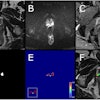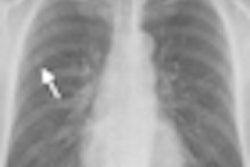
NEW YORK (Reuters Health), May 18 - Diagnostic balloon occlusion is safe in normal coronary arteries, researchers say.
The balloon is inflated using a very low pressure, "just sufficient to block anterograde blood flow," note Dr. Steffen Gloekler and colleagues from University Hospital, Bern, Switzerland.
They point out that to minimize the risk of dislodging atheromatous debris, the balloons are usually inflated in normal arterial segments. The problem is that the balloons must be in contact with the endothelial layer for complete occlusion, which can "result in early or late complications, such as thrombus formation or de novo stenosis, respectively," they say in an April 26 online report in the American Journal of Cardiology.
To assess the safety of diagnostic balloon occlusion, the researchers studied outcomes of the procedure in 133 patients with 141 entirely normal coronary arteries and 183 patients with 285 partially normal arteries (at least one stenotic lesion).
During collateral flow index measurements, the balloon was inflated for 60 to 120 seconds at inflation pressures of 1 to 3 atm. After the catheter was withdrawn, the authors looked for evidence of spasm, thrombi, wall irregularities, dissections, or flow alteration.
The primary end points were procedural and long-term complications. Secondary end points included cardiac events at five-year follow-up.
One patient (0.2%) with normal coronary arteries had a procedural complication.
Ninety-two patients had repeat angiographic procedures in 150 vessels. Quantitative coronary angiography showed no differences in percentage diameter stenosis between baseline and follow-up (4.1% versus 3.9%). One patient in each group developed a new stenotic lesion that was treated by percutaneous coronary intervention (PCI; one at 14 months and the other at 72 months).
Major cardiac events occurred significantly less often in patients with entirely normal vessels compared to those with partially normal vessels (0.8% versus 5.5%, p = 0.02). Patients with normal vessels also had less frequent PCI for stable angina (0.8% versus 18%, p < 0.0001).
The researchers conclude that "from this observational view, it can therefore be concluded that there are no relevant long-term clinical consequences after diagnostic coronary balloon occlusion in normal vessels."
http://www.ajconline.org/article/S0002-9149(10)00509-6/abstract
Am J Cardiol 2010.
Last Updated: 2010-05-17 14:48:09 -0400 (Reuters Health)
Copyright © 2010 Reuters Limited. All rights reserved. Republication or redistribution of Reuters content, including by framing or similar means, is expressly prohibited without the prior written consent of Reuters. Reuters shall not be liable for any errors or delays in the content, or for any actions taken in reliance thereon. Reuters and the Reuters sphere logo are registered trademarks and trademarks of the Reuters group of companies around the world.


















